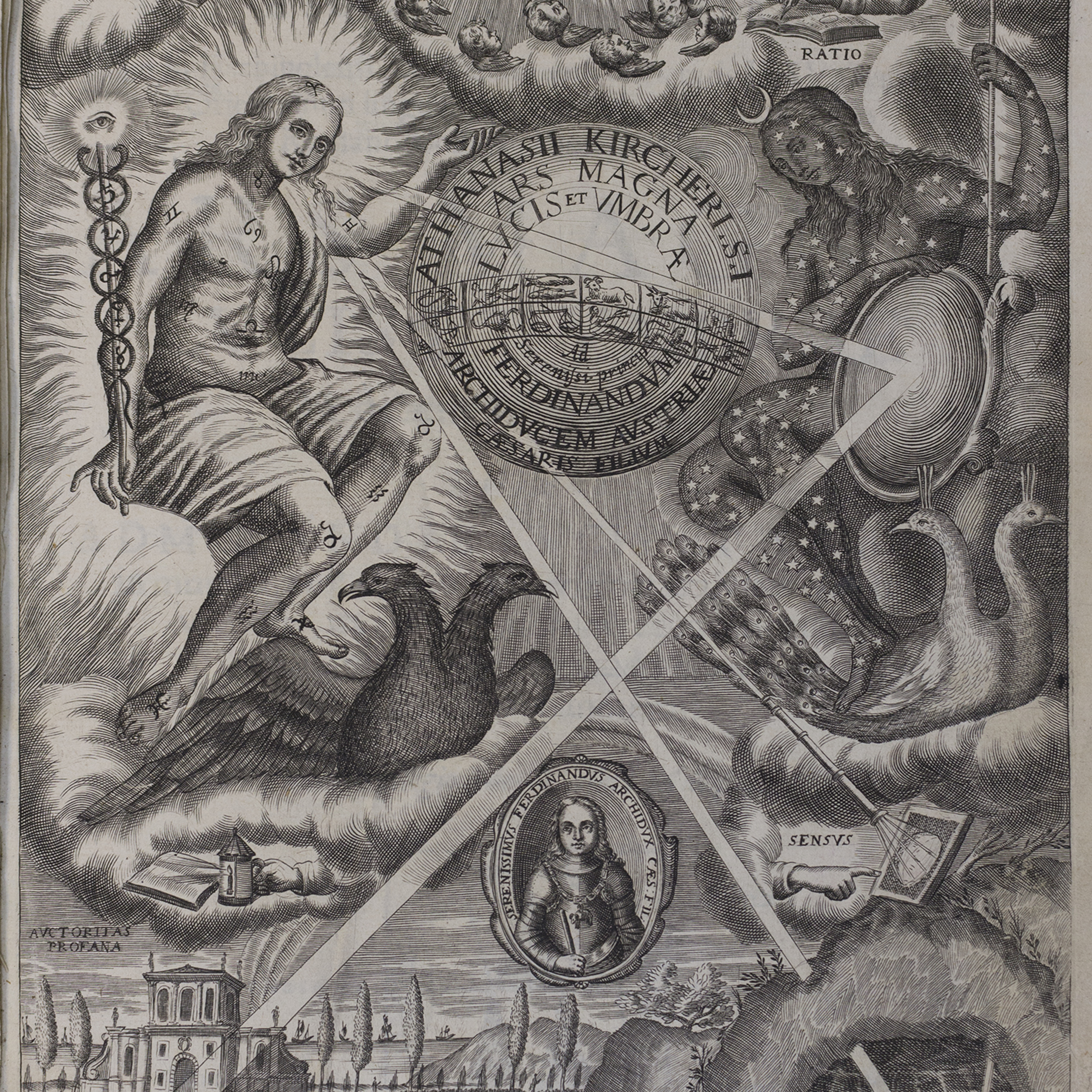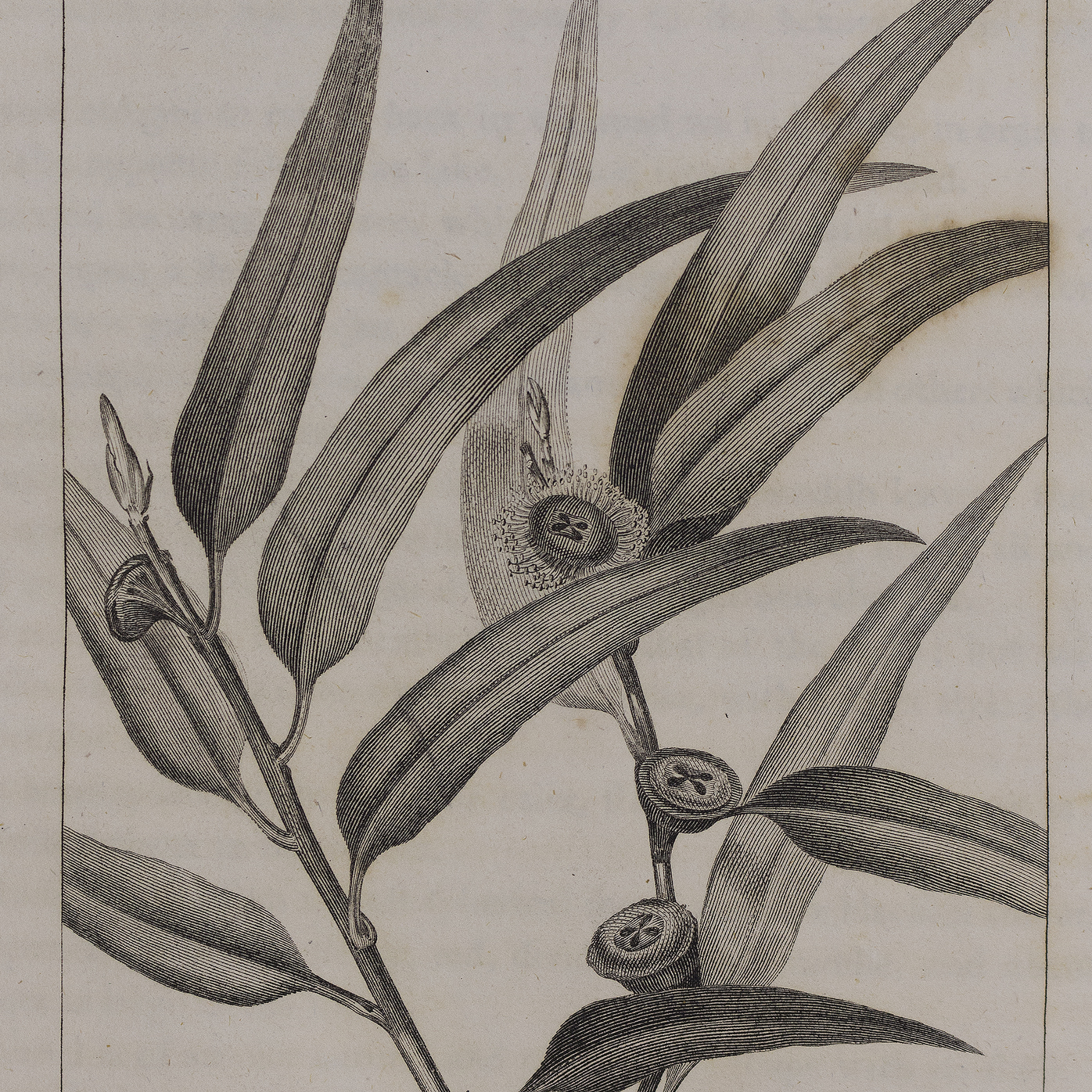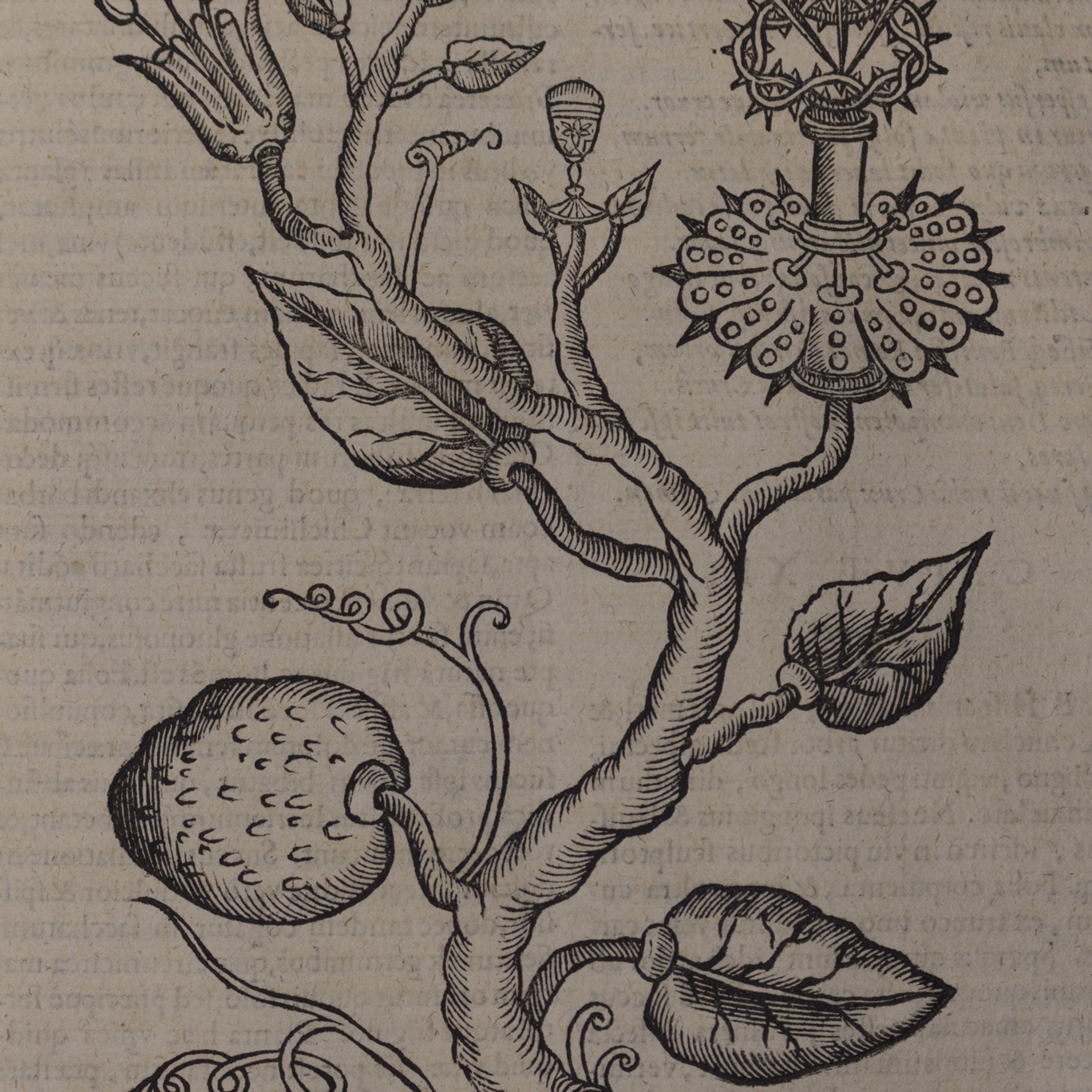Scientific Illustrations
Scientific illustration could be allegorical, representative, or a hybrid of the two. The title page of Jesuit scholar Athanasius Kircher’s Ars Magna Lucis et Umbrae, or The Great Art of Light and Shadow, portrays a system of creation in which the physical and spiritual worlds are shown to have separation; they are governed by a single law, the law of the Creator. Its blend of Christian and classical iconography portrays the four sources of wisdom (sacred authority, reason, wordly authority, and the senses) and argues that wisdom behaves in the same way as light.
Eucalyptus globulus, illustrating the leaves, flowers, and fruit of the eucalyptus, is from a book narrating a combination rescue-and-scientific mission of the French Navy. Author Jacques-Julien Joutou de La Billiardière was the botanist aboard one of the ships, and he took the opportunity to conduct as much research as he could as they explored the waters of Oceania. His illustrations of the plants he observed during the mission are rigorous and exacting.
Perhaps the most intriguing type of scientific illustration combines these impulses towards realism and allegory, as seen in this picture of the passionfruit (granadillae ramus). It provides a reasonably accurate representation of the leaves, fruit, and growth habit of the plant. The flower itself, however, is portrayed allegorically, emphasizing the ‘crown of thorns’ appearance of its style and stigma that gave the plant its name. In place of a second fruit is a small sacramental chalice: the fruit of the Passion is Redemption.



